Permaculture companion plants for Common Sunflower
| Image | Name | Data | Description | Actions |
|---|---|---|---|---|
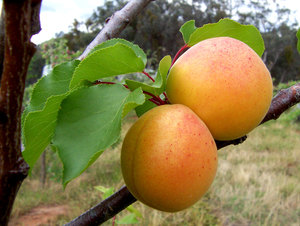
|
Apricot |
4-8
Perennial
Full sun, Partial sun/shade
Moist
Light (sandy), Medium
Deciduous
9.0
Trees
Adhesive, Dye, Gum, oil, Lumber, Espalier
true
Fruit, Seed
https://en.wikipedia.org/wiki/Prunus_armeniaca
Medium
Rosaceae
true
Oil, Gum
https://pfaf.org/User/Plant.aspx?LatinName=Prunus armeniaca
China North-Central, China South-Central, Inner Mongolia, Kazakhstan, Kirgizstan, Kriti, Manchuria, Qinghai, Uzbekistan, Xinjiang
Afghanistan, Albania, Algeria, Bulgaria, California, Central European Rus, Colorado, Corse, Cyprus, East European Russia, East Himalaya, France, Germany, Greece, Hungary, Idaho, Illinois, Iowa, Iran, Italy, Kansas, Korea, Krym, Lebanon-Syria, Libya, Michigan, Missouri, Montana, Morocco, New Mexico, New South Wales, North Caucasus, Oregon, Pakistan, Pennsylvania, Portugal, Queensland, Romania, Sardegna, South Australia, South European Russi, Tadzhikistan, Transcaucasus, Tunisia, Turkey, Turkey-in-Europe, Turkmenistan, Ukraine, Utah, Virginia, Washington, West Himalaya, Yugoslavia
https://powo.science.kew.org/taxon/urn:lsid:ipni.org:names:729463-1
|
The apricot is a tree native to China and Central Asia. It typically grows to be about 20-30 feet tall and has a spreading, round canopy. The leaves are oval-shaped and about 2-4 inches long, with a serrated edge and a glossy green surface. The flowers are white or pink and have five petals. The fruit is a drupe, similar in appearance to a peach, with a smooth, orange skin and a fleshy interior. Apricots are known for their sweet flavor and are often used in jams, jellies, and other preserves. The fruit can also be eaten fresh or dried. The seed, or pit, of the apricot contains a small amount of cyanide and should not be eaten. Apricots prefer a warm, sunny climate and well-draining soil. They are sensitive to frost and can be damaged by cold temperatures. To successfully grow apricots, they should be planted in an area with full sun exposure and watered regularly. Apricots have a number of uses beyond their delicious fruit. The wood of the tree is often used for smoking meats, and the leaves can be used as a natural insecticide. In traditional medicine, apricot oil has been used to treat a variety of ailments. |
Show
Edit |

|
Runner Bean |
1-12
Annual, Perennial
Full sun
Moist
Light (sandy), Medium, Heavy (clay)
3.0
true
Flowers, Leaves, Root, Seed, Seedpod
https://en.wikipedia.org/wiki/Phaseolus_coccineus
Fast
Scarlet runner, scarlet runner bean, scarlet conqueror, fire bean, mammoth, red giant phaseolus coccineus ssppolyanthus (cache bean)
Fabaceae or leguminosae
https://pfaf.org/User/Plant.aspx?LatinName=Phaseolus coccineus
Guatemala, Honduras, Mexico Central, Mexico Gulf, Mexico Northeast, Mexico Northwest, Mexico Southeast, Mexico Southwest, Nicaragua, Panamá
Alabama, Amur, Assam, Baltic States, Bangladesh, Belarus, Bulgaria, Central European Rus, China North-Central, China South-Central, China Southeast, Colombia, Czechoslovakia, East European Russia, East Himalaya, Ecuador, Ethiopia, India, Inner Mongolia, Jawa, Kenya, Khabarovsk, Kirgizstan, Korea, Manchuria, Nepal, New Guinea, New Zealand North, New Zealand South, North European Russi, Northwest European R, Pakistan, Primorye, Rwanda, South European Russi, Tanzania, Transcaucasus, Ukraine, Uzbekistan, Wake I., West Himalaya
3-5 years
https://powo.science.kew.org/taxon/urn:lsid:ipni.org:names:513754-1
Nitrogen fixer
|
Show
Edit |
|
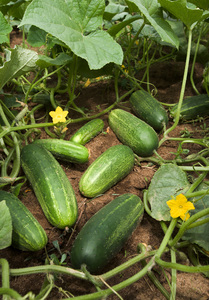
|
Cucumis sativus |
9-11
Annual
Full sun
Moist
Light (sandy), Medium, Heavy (clay)
2
Vines
Fruit, Leaves, Seed
Seed - direct sow, Seed - transplant
1 week after last frost
https://en.wikipedia.org/wiki/Cucumber
Cucurbitaceae
Gurke
50-65
23cm
6.0-6.8
15-30°C (60-85°F)
https://pfaf.org/User/Plant.aspx?LatinName=Cucumis sativus
True
Fruit
Assam, Bangladesh, China South-Central, China Southeast, East Himalaya, Myanmar, Nepal, Thailand, West Himalaya
Alabama, Albania, Andaman Is., Arizona, Arkansas, Austria, Bahamas, Bolivia, Caroline Is., Cayman Is., Colombia, Costa Rica, Cuba, Czechoslovakia, Denmark, Dominican Republic, Ecuador, Florida, Georgia, Gulf of Guinea Is., Haiti, Illinois, India, Jamaica, Kansas, Kazakhstan, Kentucky, Korea, Laos, Leeward Is., Louisiana, Marianas, Marshall Is., Massachusetts, Michigan, Mississippi, Missouri, New Caledonia, New York, Nicaragua, Nicobar Is., North Carolina, North Caucasus, Ohio, Oman, Ontario, Pakistan, Pennsylvania, Pitcairn Is., Puerto Rico, South Carolina, Sri Lanka, Sweden, Tadzhikistan, Trinidad-Tobago, Turkmenistan, Utah, Uzbekistan, Venezuela, Vietnam, Virginia, Windward Is., Zaïre
2-3 weeks before last frost
1 week after last frost
0.9
https://powo.science.kew.org/taxon/urn:lsid:ipni.org:names:292296-1
Oil
Cosmetic, oil
true
|
Cucumber, scientific name Cucumis sativus, is a member of the gourd family. It is native to India and other parts of Asia. Cucumber is a trailing or climbing plant that grows to a height of 5-10 feet. The leaves are dark green and glossy, and the plant produces yellow flowers. The fruit of the cucumber plant is a long, green, edible vegetable with a thin skin. Cucumbers are typically about 6-9 inches long and 2-3 inches in diameter. In terms of growth and cultivation, cucumber plants prefer warm, sunny conditions and well-draining soil. They should be watered regularly, especially during dry periods. Cucumber plants are not winter hardy and should be grown in the summer months in most climates. To cultivate cucumbers successfully, it is important to provide them with adequate space to grow and to support the plants with trellises or other means to keep the fruits off the ground. The plant will develop male and female flowers. You can recognize the female by having a tiny cucumber underneath. Sometimes the plant develops a lot of male flowers first, so be patient. If you don’t see any bees pollinating. Take a male and put it on all the female flowers. Cucumber fruits are edible and can be eaten raw, pickled, or cooked. The skin and seeds of the cucumber are edible, but some people choose to remove the seeds before eating the fruit. Cucumber fruits can be stored in the refrigerator for a few days after harvest. Cucumbers have several uses. In addition to being eaten as a vegetable, they can also be used in a variety of dishes and salads. Cucumber slices are often used as a garnish or as a refreshing addition to beverages. Cucumbers are also commonly used in natural skin care products and are believed to have anti-inflammatory and soothing properties. #### Propagation Direct sow when soil is warm enough in early summer. Sow seeds individually indoors 3-4 weeks before planting outside into warm soil. Use bottom heat if possible. Transplant when plants develop third leaf. #### Medicinal Fruit is depurative, diuretic, emollient, purgative and resolvent #### Links [Cucumber @ West Coast Seeds](https://www.westcoastseeds.com/products/patio-snacker) |
Show
Edit |

|
Capsicum Annuum Grossum |
true
Medium
Moist
Full sun
10-11
Cayenne pepper, chili pepper, christmas pepper, red pepper, ornamental chili pepper
Light (sandy), Medium, Heavy (clay)
Solanaceae
1.0
Paprika, gemüsepaprika
Flowers, Fruit, Leaves
Perennial
https://pfaf.org/User/Plant.aspx?LatinName=Capsicum annuum
Colouring, Condiment
Companion
|
Show
Edit |
|

|
Jalapeño Chili |
0.6
Annual
Jalapeño
Solanaceae
|
Can be eaten green. |
Show
Edit |
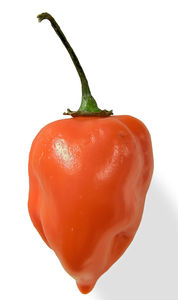
|
Habanero |
Solanaceae
|
The habanero is a hot variety of chili pepper. Unripe habaneros are green, and they color as they mature. The most common color variants are orange and red, but the fruit may also be white, brown, yellow, green, or purple. Typically, a ripe habanero is 2–6 cm (0.8–2.4 in) long. Habanero chilis are very hot, rated 100,000–350,000 on the Scoville scale. The habanero's heat, flavor and floral aroma make it a popular ingredient in hot sauces and other spicy foods. |
Show
Edit |
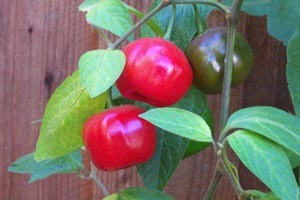
|
Capsicum pubescens |
https://en.wikipedia.org/wiki/Capsicum_pubescens
true
Moist
Full sun
8-11
Rocoto
Light (sandy), Medium, Heavy (clay)
Solanaceae
3.0
Rocoto chili, baumchili
Fruit
Perennial
https://pfaf.org/User/Plant.aspx?LatinName=Capsicum pubescens
Bolivia, Ecuador, Peru
Colombia, Costa Rica, Guatemala, Honduras, Mexico Southwest, Venezuela
https://powo.science.kew.org/taxon/urn:lsid:ipni.org:names:814839-1
Condiment
|
Show
Edit |
|

|
Brussel Sprouts |
Full sun, Partial sun/shade
Moist
Light (sandy), Medium, Heavy (clay)
1.2
0.2
Biennial
3 to 7 years
true
Leaves
Rosenkohl
Brassicaceae or cruciferae
https://pfaf.org/User/Plant.aspx?LatinName=Brassica oleracea gemmifera
|
A leaf vegetable in the cabbage family. |
Show
Edit |
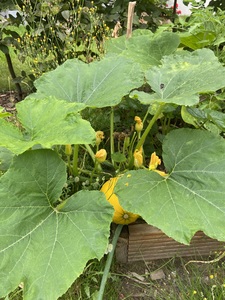
|
Squash |
2-11
Full sun, Partial sun/shade
Moist
Light (sandy), Medium, Heavy (clay)
5.5-5.9
0.6
8
Annual
Vines
Fast
Seed - transplant
after last frost
2 weeks
Flowers, Fruit, Leaves, Seed
Oil
Crookneck squash
Kürbis
Cucurbitaceae
https://en.wikipedia.org/wiki/Cucurbita_moschata
https://pfaf.org/User/Plant.aspx?LatinName=Cucurbita moschata
sow seeds in pots in a greenhouse
boiled root is galactogogue, anthelmintic
oil
true
|
Squash, also known as Cucurbita moschata, is a plant that is native to the Americas. It is commonly used in gardens and farms for its edible fruits and leaves. Squash plants can grow to be quite large, with some varieties reaching heights of up to 10 feet. They tend to grow quickly, with a mature plant producing fruit within a few months of planting. In terms of growing conditions, squash plants prefer full sun and well-draining soil. They also need plenty of water, especially during the hot summer months. To cultivate squash successfully, a grower may need to provide adequate space for the plant to spread out, as well as support for the vines and fruit. Squash needs lots nutrition and therefore needs good soil. It can also be grown on compost The edible parts of squash plants include the fruit and leaves. The fruit can be stored after harvest by keeping it in a cool, dry place. The leaves can also be eaten, either cooked or raw, and can be stored in the same way as the fruit. The fruit can be used in a variety of dishes, including soups, stews, and baked goods. The leaves can be used as a substitute for spinach in many recipes. In addition to its culinary uses, squash has a number of medicinal uses. The leaves have been used to treat a variety of ailments, including infections and inflammation. Squash plants can also be used for fertility, as the large leaves provide shade and moisture for the soil. They can also be used as mulch, wind protection, and ground cover. |
Show
Edit |
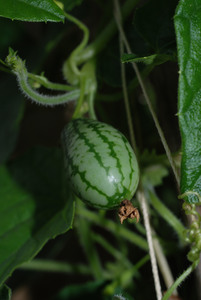
|
Cucamelon |
Annual
Full sun
Vines
Seed - direct sow, Seed - transplant
1 week after last frost
https://en.wikipedia.org/wiki/Melothria_scabra
Cucamelon, Mexikanische mini-gurke
60-70
23cm, 60cm
6.5-7.0
15-30°c (60-85°f)
Mouse melon
Cucurbitaceae
-3
67
Colombia, El Salvador, Guatemala, Honduras, Mexico Central, Mexico Northeast, Mexico Northwest, Mexico Southeast, Mexico Southwest, Nicaragua, Panamá, Venezuela
3-4 weeks before last frost
At last frost
https://powo.science.kew.org/taxon/urn:lsid:ipni.org:names:293320-1
|
Corn, Sunflowers and any other high growing plant, can act as a trellis. #### Propagation Direct sow when soil temperatures reach 15°C (60°F). Plant inside 3-4 weeks before planting outside, and use bottom-heat to help germination. Transplant when plant develop their third true leaf. #### Links [Cucamelon @ West Coast Seeds](https://www.westcoastseeds.com/products/cucamelon) |
Show
Edit |